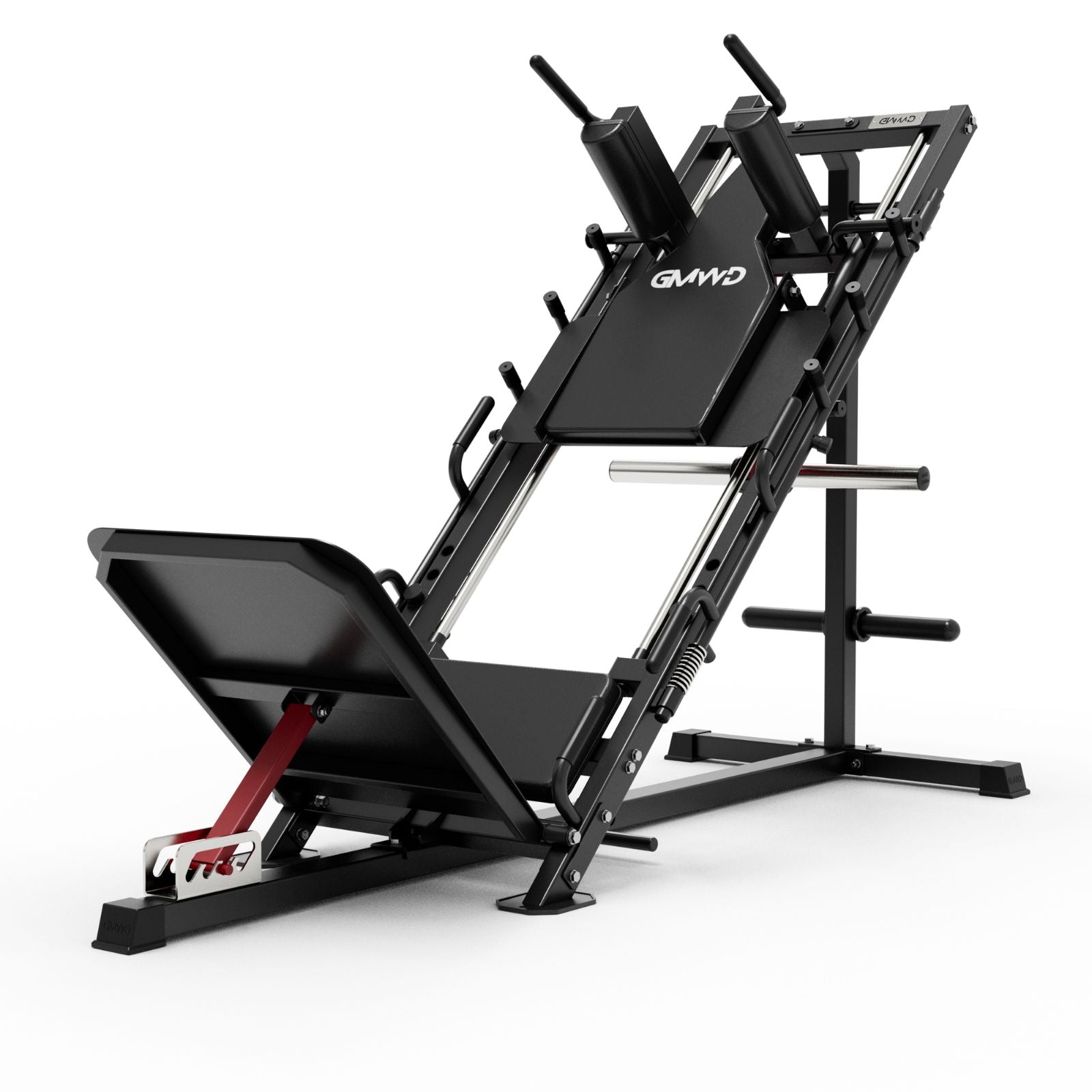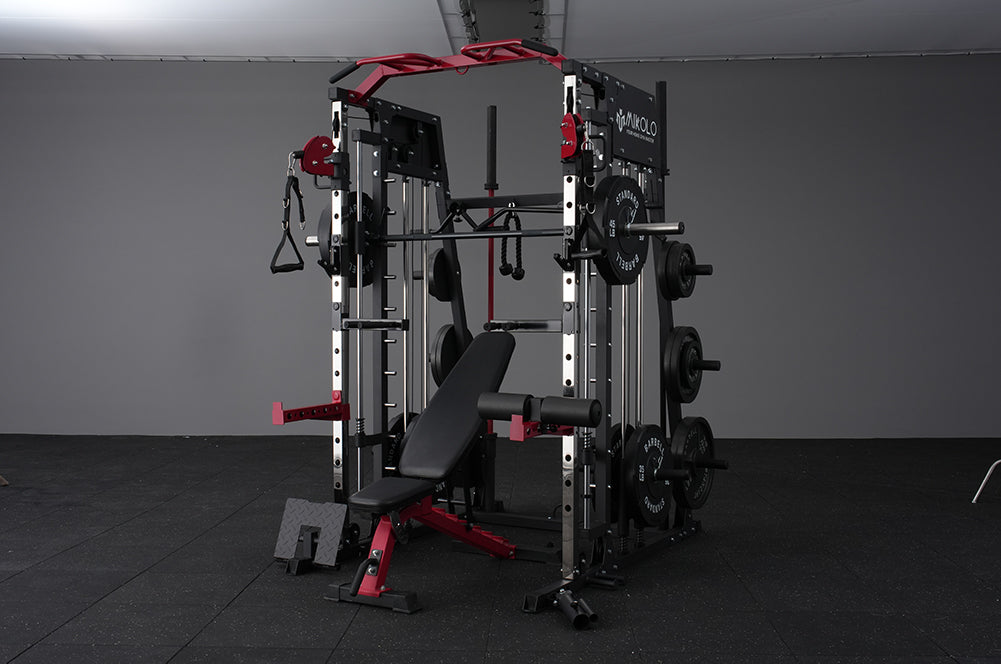When it comes to building strength, toning muscles, and improving flexibility, workout band sets have become an essential tool in fitness enthusiasts' arsenals. Whether you're a beginner just starting your fitness journey or an experienced athlete looking to add variety to your workouts, resistance bands offer a versatile and effective way to enhance your training regimen.
In this article, we’ll dive into what workout band sets are, the benefits they offer, and how you can incorporate them into your workouts for maximum results.
What Are Workout Band Sets?
Workout band sets are collections of resistance bands, typically made from durable rubber or latex. These bands come in various lengths, thicknesses, and resistance levels, allowing for a wide range of exercises that target different muscle groups. Unlike traditional weights or machines, resistance bands work by providing external resistance, which helps to activate muscles through both concentric (shortening) and eccentric (lengthening) movements.
Most workout band sets include multiple bands, each with a different resistance level. For example, a resistance band set could range from light resistance (often used for beginners or rehabilitation exercises) to heavy resistance (ideal for advanced strength training). Some sets also come with accessories like door anchors, handles, or ankle straps, which help you maximize the variety of exercises you can perform.
1. Types of Resistance Bands
Resistance bands come in various styles, each with its unique features and purposes. Understanding the different types can help you choose the right resistance band for your workout needs.
-
Loop Bands: These are the most popular type of resistance band, characterized by their circular shape. Loop bands are incredibly versatile and can be used for a wide range of exercises, including strength training, stretching, and lower body exercises. They are perfect for adding resistance to squats, lunges, and lateral band walks.
-
Tube Bands: Made from a tube-like material, these bands are often used for strength training exercises. Tube bands typically come with handles, making them ideal for exercises like chest presses, rows, and bicep curls. They are generally more durable than loop bands and can provide a higher level of resistance.
-
Pull-Up Resistance Bands: Specifically designed for assisted pull-ups, these bands are thicker and more durable. They help reduce the amount of body weight you need to lift, making pull-ups more accessible for beginners. Pull-up resistance bands can also be used for other strength training exercises, adding versatility to your workout routine.
-
Fabric Bands: Made from fabric material, these bands are often used for lower body exercises such as squats, lunges, and glute bridges. Fabric bands are known for their comfort and durability, providing a non-slip grip that stays in place during your workout. They are an excellent choice for those looking to target their glutes and legs.
Why Should You Use Resistance Band Sets?
There are several reasons why workout band sets should be a staple in any fitness routine. Below are some of the top benefits:
Resistance band training is a versatile and effective method for strength training that can incorporate various resistance band setups.
1. Versatility
Resistance bands can be used to target virtually every muscle group in your body. From arms, shoulders, and back to legs and core, the possibilities for resistance training exercises are endless. You can also adjust the difficulty by altering the length of the band, increasing the tension, or combining multiple bands for a more intense workout.
2. Portability
One of the standout features of workout band sets is their portability. They’re lightweight and compact, making them ideal for home workouts or travel. Unlike heavy dumbbells or bulky machines, resistance bands can easily be packed into a bag and used wherever you go. Whether you’re at home, at the park, or on vacation, resistance bands can help you stick to your fitness routine without missing a beat.
3. Low Impact for Physical Therapy
For those with joint issues or looking to avoid high-impact exercises, resistance bands offer a low-impact alternative to traditional weight training. The elastic nature of the bands reduces the strain on your joints while still providing effective resistance. This makes them an excellent choice for individuals in rehabilitation or those seeking a gentler yet effective workout. Resistance bands are also widely used in physical therapy rehabilitation programs to enhance strength, stability, and mobility, especially for conditions like shoulder issues.
4. Improved Muscle Engagement
Unlike traditional weights, resistance bands provide constant tension throughout the entire range of motion. This ensures your muscles are engaged during both the concentric and eccentric phases of the exercise, leading to better overall muscle activation and more efficient strength gains.
5. Cost-Effective
Workout band sets are generally much more affordable than buying individual weights or investing in expensive gym equipment. With just a few bands, you can replicate a wide range of exercises that would typically require multiple pieces of equipment. This makes workout band sets an excellent investment for anyone looking to build a comprehensive home gym without breaking the bank.
6. Can You Build Muscle with Resistance Bands?
Absolutely, you can build muscle with resistance bands. These versatile tools are excellent for adding resistance to your workouts, helping you target specific muscle groups effectively. Whether you’re at home, in the gym, or on the go, resistance bands can be a powerful addition to your fitness routine.
Resistance bands work by providing continuous tension throughout the entire range of motion, which is crucial for muscle growth. This constant tension helps to engage your muscles more effectively, leading to increased strength and muscle gains. You can use resistance bands to target various muscle groups, including your legs, arms, chest, and back.
To build muscle with resistance bands, it’s essential to use them correctly and consistently. Here are some tips to get you started:
-
Start with Lighter Resistance Levels: Begin with a lighter resistance band and gradually increase the tension as you become stronger. This progressive overload is key to muscle growth.
-
Variety of Exercises: Incorporate a variety of exercises to target different muscle groups. This ensures a balanced workout and prevents muscle imbalances.
-
Controlled Movements: Focus on slow and controlled movements to maximize the effectiveness of each exercise. This helps to engage the muscles fully and reduces the risk of injury.
-
Consistency: Aim to include resistance band workouts in your routine 2-3 times per week. Consistency is crucial for seeing results and building muscle over time.
How to Choose the Right Resistance Band Set
When selecting a workout band set, there are a few factors to consider to ensure it fits your needs:
-
Resistance Levels: Most workout band sets come with multiple bands of varying resistance levels. If you’re new to exercise, you may want to start with lighter resistance bands. As you progress, you can add more resistance to increase the intensity of your workouts.
-
Material Quality: Look for bands made from high-quality latex or other durable materials. Durable resistance bands will last longer, providing consistent resistance without snapping or losing elasticity over time.
-
Included Accessories: Some sets come with helpful accessories such as handles, door anchors, or ankle straps, which can expand the number of exercises you can perform. If you’re looking for maximum versatility, consider investing in a set with these additional tools.
-
Portability: If you plan to use your workout band set on the go, look for one that’s lightweight and comes with a carrying bag for easy transport.
1. Features to Look for in Resistance Bands
When shopping for resistance bands, there are several features to consider to ensure you get the best product for your needs. Here are some key features to keep in mind:
-
Material: Look for bands made from durable, high-quality materials like latex or fabric. These materials are known for their longevity and ability to withstand regular use without snapping or losing elasticity.
-
Resistance Levels: Consider the level of resistance you need. Many sets come with multiple bands offering different resistance levels, allowing you to adjust the intensity of your workouts as you progress.
-
Size: Choose a band that is the right size for your body and the exercises you plan to do. Some bands are longer or shorter, which can affect the range of exercises you can perform.
-
Handles: If you prefer tube bands, look for ones with comfortable, durable handles. These make it easier to grip and maneuver the band during exercises, enhancing your workout experience.
-
Portability: If you plan to use your resistance bands on the go, look for lightweight options that come with a carrying bag. This makes it easy to transport your bands and maintain your fitness routine wherever you are.
-
Warranty: Consider brands that offer a lifetime warranty or guarantee. This ensures you get a high-quality product that will last, providing peace of mind with your purchase.
By considering these features, you can find the best resistance bands for your needs and get started with an effective workout routine.
Best Resistance Band Workouts with Workout Band Sets
Here are some of the most popular exercises you can do with a workout band set: Four resistance bands offer different tension levels to accommodate users with varying strength and fitness levels.
1. Squats:
Place the band just above your knees or under your feet. Stand with your feet shoulder-width apart, and squat down, keeping tension on the band. This exercise targets your glutes, quads, and hamstrings.
2. Chest Press:
Anchor the band behind you (e.g., a closed door) and hold the handles or ends of the band in each hand. Press your hands forward, straightening your arms while keeping the band taut. This works your chest, shoulders, and triceps.
3. Deadlifts:
Step on the band with both feet, holding the handles or ends in both hands. With a slight bend in your knees, hinge at your hips to lower your torso, then rise back up to a standing position. This move works your hamstrings, glutes, and lower back.
4. Lateral Band Walks:
Place a loop band around your legs just above your knees or around your ankles. Squat slightly and step side-to-side, maintaining tension on the band. This works your hip abductors and glutes.
5. Lunges:
Place one foot in the center of the band and hold the ends with both hands. Lunge forward, keeping your knee aligned with your ankle. The band will provide resistance as you return to the standing position, working your quads, hamstrings, and glutes.
How to Incorporate Workout Band Sets into Your Routine
Workout band sets can be used in various ways depending on your fitness goals:
-
Warm-ups: Use light resistance bands for dynamic stretching and mobility exercises before your workout.
-
Strength Training: Incorporate bands into your traditional strength training routine by adding them to squats, deadlifts, or presses to increase resistance. A medium resistance band is particularly versatile for a wide range of exercises, including high-rep toning, pullups, and both upper and lower body workouts.
-
HIIT Workouts: Combine resistance bands with bodyweight exercises for a high-intensity interval training (HIIT) session that builds strength and burns calories.
-
Stretching and Mobility: Resistance bands are also excellent for stretching exercises, helping improve flexibility and range of motion.
Conclusion
Workout band sets are an incredibly versatile, portable, and cost-effective tool for anyone looking to improve their fitness. Whether you want to build strength, increase flexibility, or enhance your overall workout routine, resistance bands can help you achieve your goals. By choosing the right set and incorporating them into your training, you can enjoy a dynamic and efficient workout without the need for expensive gym equipment.











































Leave a comment
This site is protected by hCaptcha and the hCaptcha Privacy Policy and Terms of Service apply.